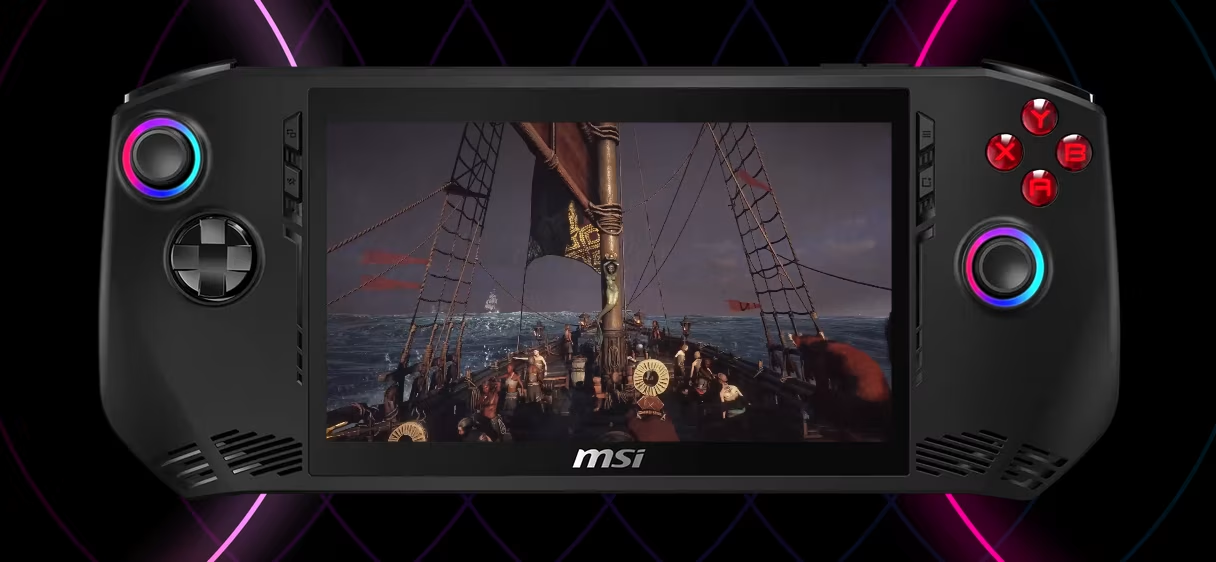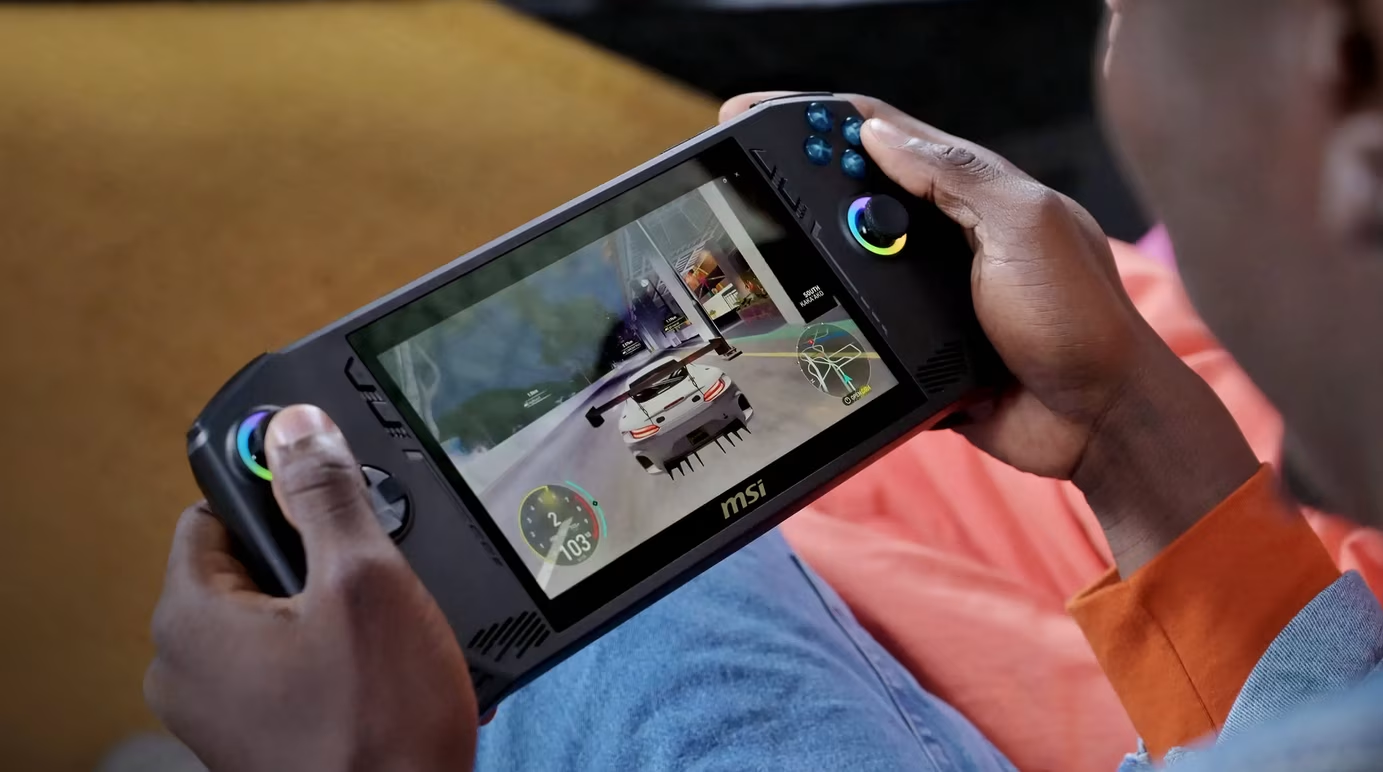MSI Claw - Another E-Waste Handheld?
ASUS, Lenovo and now MSI Claw with a sort of copy and paste handheld device. It reminds me of the series of VR headsets that were a bit better than using your phone with cardboard goggles, and now you can find them easily at your nearest Goodwill.

There are many other handhelds out there, but most recent publications seem to forget about them and compare only the “clone 3”. I will come back to this later. First, let’s see what the MSI brings new to the table.
Here are the specs from their product page. Highlighted some attention points:
- Up to Intel® Core™ Ultra 7 processor 155H
- Windows 11 Home
- 7” FHD (1920 x 1080), 120 Hz Refresh Rate, Touch Screen, 100% sRGB (Typical), 500nits (Typical), IPS-Level panel.
- Hall Effect triggers and joysticks.
- 53Wh battery capacity.
- Thunderbolt™ 4.
- Ugly RGB lights

And it seems not to have:
- The panel is not OLED
- There is no Gyroscope
- There is no Trackpad
I recommend checking their specifications page for more details.
Intel vs Batteries
If we were to believe the answers given in the IGN interview, the 53Wh battery is supposed to last 2 hours under max load.
The Intel is not famous for treating batteries well, and pretty much every other company that is making handheld devices before the “trio” had an attempt with Intel processors (AYA, GDP, One Xplayer) only to go back to AMD.
The Intel® Core™ Ultra 7 processor 155H specification is not bad, I wonder how it will fare with the rest of MSI Claw and battery choice.
Another thing that bothered me reading their product page marketing nonsense is the “Best-in-class 53Whr battery capacity”. I wish they would elaborate what “best” and “in-class” mean, as a number of other companies have modes with more than 53Wh batteries. Like OneXPlayer for example.
120 Hz IPS-Level panel
Those are one of the texts that raise a red flag. WTF does IPS-Level means? It means I will have to spend some time in a rabbit hole of marketing names and shady business.
It appears that Hitachi and LG are the minds behind IPS. Could it be that MSI Claw is not using a panel made by those companies, but close enough?
My bet is, if it were better or close enough, they would use that name. Like Samsung PLS or AU Optronics AHVA. Or it is just poor marketing.
I learned recently that the 120Hz is a plus if done right. I used to think they could save costs and battery on a lower refresh rate panel if most games would not hit that frame rate. But I enjoyed playing games with framerate at half of the refresh rate with Steam Deck OLED.
Hall Effect Joysticks and Triggers
Recently, I have been enjoying Hall Effect joysticks, and it is becoming a trend. Before the MSI Claw, I only saw it on some AYA NEO devices and android handhelds like the Anbernic RG505 and special edition of the Retroid Pocket.
There are complaints about the quality of some sticks brands, but I doubt that it would be a problem with MSI.

Windows vs Handheld devices - MSI Center M
When Ally came out, I heard many complaints about the maturity of Windows for handheld devices. Companies that were on the handheld market before Steam Deck put significant effort on an interface for the gamers to play and customize their experience easily. It seems that MSI is on top of that, and their solution comes in 3 parts:
- MSI Center M: presumably the main interface
- MSI App Player: play android games
- MSI AI Engine: adjusts system settings on the fly without user interaction.
I wonder if those would be enough to provide a smooth user experience.
Bottom line
There are plenty of handheld devices on the market besides the “clone 3”, from niche specialized pocked devices with FPGAs, like the Analog Pocket, to companies pushing the limits of what hardware you can fit in a handheld.
Sadly, the “clone 3” is in the market of volume and mass marketing, not of innovation. It is sad to see publications that only compare one with another, and if you are lucky, you see a Steam Deck here and there.
The features we see in the MSI Claw are things already market tested and easy to build in bulk, and it would not surprise me if the new processor, the only risk here, is being “sponsored” by Intel.
